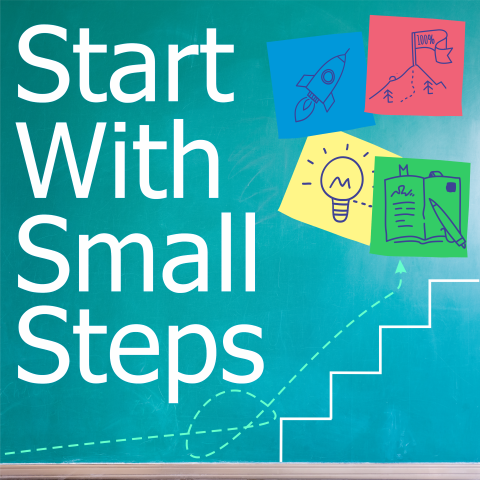“You can’t be anything you want to be, but you can be a whole lot more of who you already are.” – Tom Rath.
In our lives, we tend to fall into things, or luck into things or desperately cling onto things. And many times, we don’t design the life that we’re looking for. Even though we see the results of what planning and design does for other things, we don’t take that on ourselves. And not only that, when we design our lives, we tend to design based on the goal, and not based on the realities of who we are. We’re going to talk a little bit about talent and designing your life. After reading a number of articles and books about this particular topic, it seems all of them fall into this line, where your happiness is an intersection of your values, and your talents. You’ve always seen those talent shows where people aren’t very talented at the thing they’re supposed to be talented at. Boy, they love what they’re doing! Or someone has a job in what they’re talented at, but it makes them miserable. I think we’ve all met people who are really good at their jobs, they hate it. What we’re trying to do is find that intersection of value and talent.
https://www.outsideonline.com/2373876/three-steps-happiness
Strength Finder 2.0

The first book we’ll talk about today is Strength Finders 2.0 from 2007 by Tom Rath. He worked for the Gallup company for 13 years and is author of this book that focuses on what you’re good at. It’s not one of these personality tests. But instead, it’s a list of talents. And then rank orders your talents are from best to worst. And they’re not even just things that you would find in a personality test. Like I’m an introvert or I’m an extrovert. It’s things like lifetime Learner, and Ideation, Connectedness, and Relators. There are all kinds of personalities that are built into this test. He also talks about what a waste of time it is, to really work on your weaknesses, I would that is partially true. You have to be at least minimally good at time management or minimally good at other things, even if you’re not particularly good at them. Because modern day life and work requires you to be at least okay in those things. But really, where you have to focus in your life are what your talents and strengths are. This book is called Strength Finders, 2.0. And you can find it everywhere you find books. The interesting thing is that if you buy the book, you get a code. And so, make sure that the book, either digital or physical, has the code to go online and take the test. The test will give you the top results, you can actually just buy the test from the website itself and it is five dollars cheaper, but you don’t have the book.
https://store.gallup.com/c/en-us/assessments
Designing Your Life: How to Build a Well-Lived, Joyful Life

The next book we’ll talk about is a book from 2016 called Designing Your Life: How to Build a Well-Lived, Joyful Life by Bill Burnett and Dave Evans. We’ve talked about very small motions when it comes to habits and goals. I hear a lot of people right now talking about this exploration of where their life is at or where their life could be at. There’s a lot of time for introspection right now. While there are small steps, in terms of experiment, and research, and looking at what makes you happy, it still is about major life changes. Which means the work is a little bit bigger than a lot of the different plans that we’ve talked about in the past. That doesn’t mean that you couldn’t take some of these ideas and try some of them. You don’t have to plan your entire life; you can just plan aspects of it. For example, if you think you might be interested in volunteering for a nonprofit organization and maybe you’d like to be on the board someday. Give it a shot. Try it. These are experiments. While the book itself talks about big life changes, they don’t have to be big. You can run very minor experiments in your own life. It’s time to really step out and really see what’s possible for us to do. Don’t be intimidated by the message of the big changes. If you are considering doing major life changes, such as living in a different place, or getting a different kind of job, I do suggest reading this book. It’s a very detailed book with lots of ideas and exercises. The exercises will help you in designing a full-blown life. I found the book really enjoyable and really enlightening. This book is about going after the things you really want to have in your life and not just falling into them or accidentally backing into them. This is a really great perspective to have through any aspect of your life. The book is a little bit focused on jobs. But this is important for all of your life, not just your work. He says that life is about, “playing the infinite game of becoming more and more yourself each day,” I’d say it’s never too late to start, and you should start right now.]

What Problem Are you Trying to Solve?
That’s what I think this book is really about, designing life where our talents meet our values. The first step in doing that is trying to figure out what problem you’re trying to solve. You’re here in your life for a particular reason. Maybe because you fell into it, or it’s a life that you tried to design. Maybe you’re happy with it, or maybe you’re not happy with it. But you decide that there’s some problems that you want to solve. And when you start identifying these problems. Sometimes we just give up, we get what is called “learned helplessness”, which is when we won’t even solve our problems anymore. Because we just determined that it’s just not worth it. ’I’m never going get what I want.’ He talks about two types of Gravity Problems. Gravity is not a problem and if you said that gravity is your problem, it wouldn’t work. Because gravity just is. You can’t stop gravity. The two types of gravity problems are Functionally Inactionable. Which means you could maybe change it. But there’s a high risk, high effort, and it probably won’t change. Best thing you can do at that point is to alter your goals into something that you can win. Then there is Totally Inactionable. And that means you can’t change it, no matter how hard you try. He gives us an example of maybe a poet who wants to earn a lot of money. But you know what, poetry doesn’t earn a lot of money, and he’s never going to make poetry earn a lot of money. That is a Gravity Problem. This is where he talks about changing your focus. Could that person who writes poetry, become a songwriter? Or get together with a graphic artist and start making posters? There might be something that this person could do that incorporates what they love to do, but actually earn them money. Get out of that gravity well and look at something that you could actually change!
Lifeview and Workview
The first part of his plan talks about reflecting on your life with two 250-word paragraphs and to spend no more than 30 minutes on them. The first paragraph is your “workview” philosophy. What is good work? What is satisfying work? Is it money? Is it impact? The second paragraph is the “lifeview”, which involves personal values. How a good life is lived, Is it religion? Morality? Justice? Society? what are those things that makes your life valuable? Now, the goal is to balance those two things. If you compromise one of those in favor of the other one, you will become unhappy. Find out where those two paragraphs intersect.
Good Time Journal and the AEIOU Method
He asked everyone to do what he calls a “Good Time Journal.” You’ve heard people probably talk about “joy” or “flow” or “peak experiences”. It’s those times when you’re having so much fun. Time just disappears. You don’t know where the day went. That’s what you have to start documenting. He talks about also then documenting the things that drain you he talks about using a method that he calls the AIEOU method
- A – What were you actually doing?
- E – Environment? Where were you? What was the mood of the area?
- I – Interaction? Was it people that you were working with machines devices? Was it a formal setting? Was it a casual setting?
- O – Objects What were you actually working with? Were they devices? Or tools? Or things?
- U – Users who were you there with? Were they adding or subtracting to your flow? Why?
He also talks about running this kind of analysis with memories of our peak experiences or memories of our bad experiences. Memories stick with us for a reason. He asked us to do the good time journal daily or at least every few days for at least three weeks.
Then once you have a few ideas about what really gives you those flow moments or what really detracts from those flow moments, he asked people to generate lots of ideas about what would make our lives happier. He says don’t fall in love with that first idea. Our brains are lazy and it’s just going to fall for whatever we say the first thing is, or it’ll fall for the thing that seems like the least amount of work, come up with lots of things that will potentially make your life happier. Once we have those ideas, he asked us to look at creating prototypes of solutions to those ideas Test out the things that we think are going to be great ideas, or solutions for the problems we’re trying to solve. Ask questions, do research, collaborate with other people.

Feasible Other Lives
His next step is to create possible other lives. He wants you to look at creating three possible, five-year versions of yourself. Where could you be in five years, if things were just radically different based on what you documented are your values and what you documented are your problems that you’re trying to solve? And there’s no right answer to this. A few of them will be feasible, some of them will make you happy. Make sure they’re just not different versions of the same thing, or different versions of what you’re doing now. Present your plans to other people who know you and can give you good feedback. You then move on to having hands-on experiences. What could I do in exploring these feasible five-year plans? But the important thing is that these aren’t full-scale models. They’re just tiny examples of what your future feasible life could be. Try to get other people involved in your experience. Start conversations with others who are doing what you’re thinking about doing. Try to turn those into opportunities of learning. He calls it “sneaking up on the future”. You’re going towards the life you want, but not fully. So, one example he gave was of a woman who wanted to be in charge of a restaurant. She thought she just loved everything about restaurants. She quit everything, used your savings, and bought a restaurant. And as it turned out, she did not like owning a restaurant. She liked designing restaurants. She liked planning them out. But the actual day-to-day work was not something she enjoyed. She could have found that out by doing some minor experiments, like working in a restaurant, or interviewing people who work in restaurants. But because she jumped in without these experiments, it became hard for her to analyze this before it happened. And she just jumped right in.

Interview Key People
My friend’s father who I’ve mentioned before, always had this great idea where he talked about interviewing people. One of the exciting things about interviewing people is they love talking, particularly when it has to do with themselves. So, it’s very easy to ask someone for 30 minutes for a cup of coffee, or maybe a Zoom meeting just to talk over what their lives are like, or what their thoughts are about this kind of industry. People love to talk about themselves. Give it a shot! It sounds a little scary, but I can tell you it’s a valuable effort. I had this opportunity to do something very similar to that. I came in second place on a scholarship for actuarial science. And while I didn’t get the scholarship, the person who was in charge of the scholarship, liked my application. He invited me to come out to his company and spend half a day there and really learn about what it takes to be an actuarial scientist in an insurance company. So, I got two hours of his time, which was amazing. I got to interview him about what he thought the job was like, what he thought the company was like working for. I had a lot of reason to believe I would love this job, because I’m a math girl. And I love anything that involves math. Except when I walked away from this interview period, I figured out that while I like math, I don’t like statistics about death and accidents. And I would become very depressed about a job like that. So, this interview process led me into a different path, and allowed me to see that this job potential wasn’t really for me. Think of an example where a person decides that they think they would enjoy owning a restaurant, but they’re not entirely sure. Or maybe they would give up their high-pressure job and work in a library. These experiments can happen by taking small part time jobs, or volunteer jobs and giving it a little experiment to see if it’s true. Would you like working in those scenarios? That’s what he means when he talks about running experiments. Test out aspects of these feasible lives.
You’ve come up with some ideas. You created this feasible life. You’ve interviewed and done some research about what these feasible lives will be. Now to look at the options, narrow down the list, really understand things. And deep dive into what you learned in this whole process of looking at your designed life. You can even start to live part of your reality if it’s possible. Again, you could volunteer at a library, work part time at a restaurant, and play out some of these scenarios.
Failure
And then he says, if we do get stuck in learned helplessness, don’t consider yourself what he says “screwed”. Instead, acknowledge that you’re stuck, and then reduce the risk and do a smaller prototype. But just remember, it can sometimes feel like a failure if things didn’t really work out the way you thought they were. But if you’re living a life of curiosity, and experiments, there is no such thing as failure. There is learning something and amending your plans. Or experiment passed and you have more things that you’ve learned and more experiments to run. But something didn’t go the way you thought it was going to go. Write it down, categorize it, and then look for insights. Sometimes there are screw ups where you just messed something up. It wasn’t anyone’s fault, and it has no bearing on the future. Or there’s weaknesses. That’s where you have to go in and look at it and say, ‘Maybe I could hire a business manager, or a third-party company that could take care of those things for me. So, I can focus on the part I love.’ Again, that analysis has to take place when you live that life of a curious person. Keep trying stuff and don’t postpone it. But we’re doing little experiments. There’s no reason why you couldn’t volunteer at a library next week or work part time at a restaurant after your day job right now. So, don’t put off these experiments. Just keep experimenting and looking at those things. And if you run into a problem, again, re-frame it a little bit, don’t just say, ‘Oh, well, I failed. This is over.’ But instead look at where you were coming from. What would be some other perspectives that other people might have about what went wrong? Maybe talk to someone who knows you very well to help identify what actually went wrong and what could be done to change it. But all of this is a real process, and an awareness for us to really understand what we wanted, and what went right what went wrong.
Once you design something, it will change your future, it is possible to change things just by designing it.
https://www.outsideonline.com/2373876/three-steps-happiness
Summary
- Take an assessment of your strengths. Get feedback from other people about your strengths, you might be surprised! But get really focused on what you’re good at where your talents are and then start strengthening those talents.
- Know what problems you’re trying to solve in your life. Make sure that they are solvable, and that you’re taking a framework of it, that makes it possible to solve it. Make sure that you don’t have learned helplessness and just get defeated right away. Make sure you take a new look at what’s going on and coming up with the right problem to solve.
- Identify those flow moments and peak moments and also really bad moments and analyze them with the AEIOU method.
- List your values of work and home life. Are you getting the right money? Impact? Expression? Value? Where is it that your life values and your work values intersect?
- Create three, five-year possible lives. Research them determine what would be the best life for you. Ask questions of experts or people in that field. interview people in that life and try out small experiments to see if you can prove that these would actually be good ideas for you.
- Remember, you can’t fail when you live a life of curiosity and experiments. There’s always lessons to be learned whether they fail or succeed.
Challenge
Write two 250-word paragraphs about what your work view is and your life view. What are your values, your requirements, your satisfactions? What makes you happy? So, you know where your first options to design your life will come from?
Fun Advice Quote

Our fun advice is from Buckaroo Banzai “Don’t be mean. We don’t have to be mean. Cuz remember, no matter where you go there you are.”
And he’s right about that. You are where you are. And now’s the time to design where you’re going to be next.

